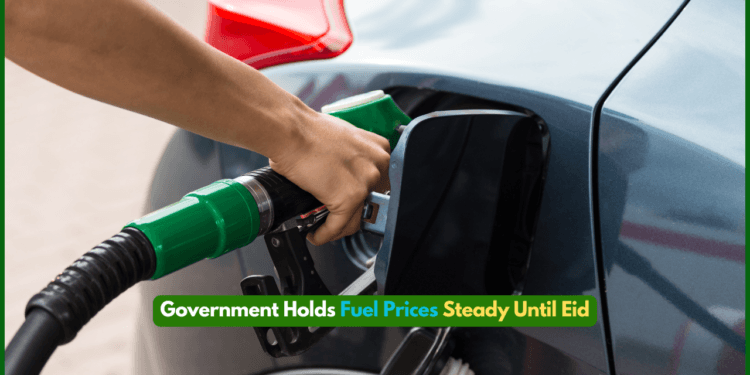The Pakistani government has opted to hold fuel prices steady for the fortnight starting March 16, 2025, defying expectations of a cut amid falling global oil rates. A Finance Division notification issued late Friday confirmed that petroleum product prices will remain unchanged through Eid, prioritizing electricity relief over pump price reductions, Today Pakistan News reports.
Petrol will stay at Rs255.63 per litre, high-speed diesel at Rs258.64 per litre, kerosene at Rs168.12 per litre, and light diesel at Rs153.34 per litre until at least March 31, 2025. This decision bucks earlier projections from oil marketing companies (OMCs), which anticipated a drop of up to Rs14.16 per litre due to declining international crude prices and premiums. Brent crude, a global benchmark, dipped below $80 per barrel this week, per Reuters, fueling speculation of a consumer windfall.
Prime Minister Shehbaz Sharif, however, redirected the financial buffer elsewhere. In a statement from the PM’s Office, Sharif explained, “We’re keeping petroleum prices stable to channel significant relief into electricity rates.” He instructed officials to pass the full benefit of lower oil costs to power consumers, a move aimed at easing household budgets as Eid approaches. “This is about long-term relief,” he added, hinting at a broader economic strategy.
The government’s pivot reflects a calculated trade-off. Analysts estimate the Rs14.16 per litre savings could translate to billions in fiscal space, now earmarked for slashing electricity tariffs—a persistent pain point for Pakistanis. “Electricity costs hit harder than fuel,” says Lahore-based economist Ayesha Khan. “This could tame inflation if executed well.” Sharif revealed a detailed plan to lower power rates is nearing completion, with an announcement slated for late March or early April—potentially a pre-Eid gift.
Pakistan’s fuel pricing, reviewed biweekly, balances import costs, taxes, and subsidies. The Petroleum Division’s decision to hold steady contrasts with last month’s Rs5 per litre petrol hike, reflecting global volatility. Sharif emphasized that combining oil price dips with other fiscal tweaks—like a recent Rs10 per litre petroleum levy hike—creates room for this power-focused relief. “It’s a holistic approach to curb inflation,” he said, noting downstream effects on food and transport costs.
For consumers, the news is bittersweet. Motorists in Karachi and Islamabad had hoped for cheaper fuel ahead of festive travel, but the promise of lower electricity bills offers broader appeal. “Fuel’s fine, but power cuts and bills kill us,” says Multan shopkeeper Bilal Ahmed. The Finance Division’s chart below details the locked-in prices:
Petroleum Product Prices (March 16-31, 2025)
| Product | Price (Rs/Litre) |
|---|---|
| Petrol | 255.63 |
| High-Speed Diesel | 258.64 |
| Kerosene | 168.12 |
| Light Diesel | 153.34 |
The chart, effective midnight March 16, underscores stability amid global flux. Sharif’s team is betting this shift will resonate more than a pump price cut, especially with Eid-ul-Fitr looming—projected for early April, per lunar estimates. Khan cautions, though: “Execution’s key. Power relief must be tangible and swift.”


















































